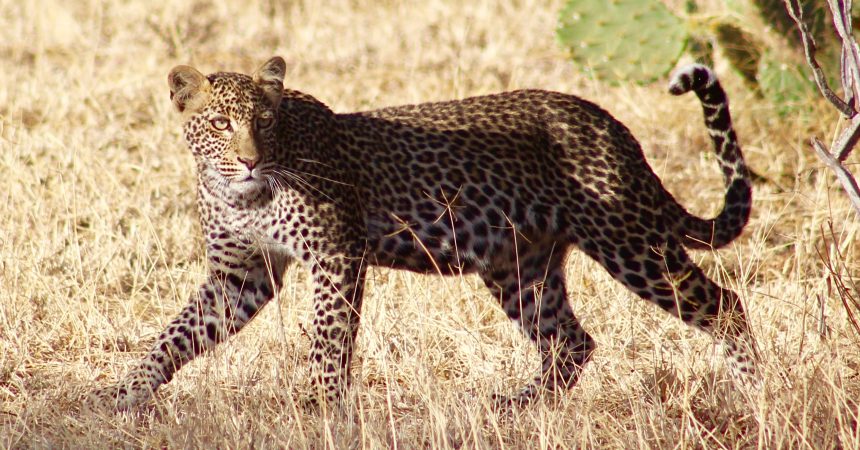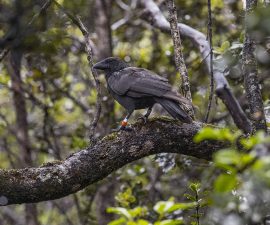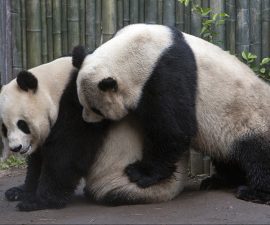A game drive through Kenya’s Laikipia County often reveals many of East Africa’s most iconic animals. While the visibility of these species indicates conservation success, the county’s robust numbers of lions, hyenas, and leopards also pose challenges for local residents who raise livestock.
Most of the communities in Laikipia are agropastoralist, with their livelihoods based on both small-scale farming and raising livestock, such as cattle, sheep, and goats. Not surprisingly, abundant carnivores and large numbers of easily caught domestic prey are not always a peaceful combination. Historically, local livestock owners have managed this conflict by herding their livestock into protective corrals—called bomas—at night. However, the high rates of human-carnivore conflict recently recorded by San Diego Zoo Global researchers in this region indicates that, in its current form, this approach is no longer effective.
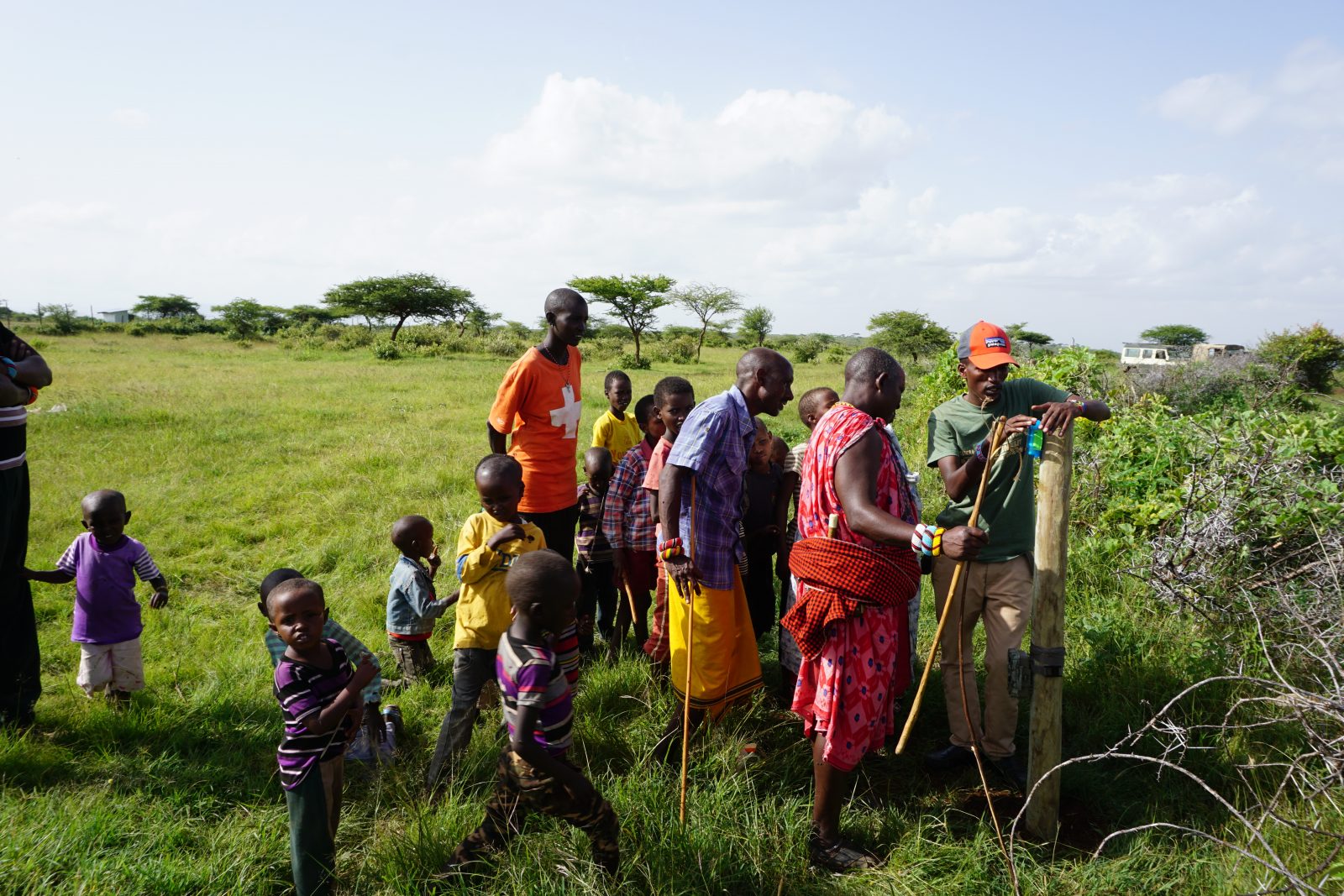
San Diego Zoo Global’s Ambrose Letoluai has an audience while explaining the AudioMoth acoustic recorder to the owner of a monitored boma.
This summer, I had the opportunity to travel to Laikipia and initiate a new human-carnivore conflict research program with San Diego Zoo Global’s Leopard Conservation Program. Over the next few years, we will be working to identify some key gaps in our understanding of the boma system, and how bomas can be adapted to better protect livestock.
This year, we’re taking a close look at individual bomas—picking apart when, where, and how predators attack livestock within these enclosures. This includes recording environmental characteristics (such as nearby vegetation and weather) and the design of the boma structure itself (including the number, thickness and height of the walls). From this information, we can assess each boma’s effectiveness at discouraging lions, leopards, and hyenas from attacking the livestock within them. In other words, we’re figuring out what works, what doesn’t, and how these patterns vary across different locations.
The challenge here is that the landscape changes substantially from community to community, and local livestock owners face threats from a range of carnivores—all with distinctly different hunting strategies. As an example, leopards are proficient climbers, often relying on trees to ambush their prey from above, while hyenas hunt more by brute force—often digging under or through boma walls. In terms of livestock defense, these differences indicate that while a boma reinforcement such as chain link fencing may be effective against hyenas, it may actually aid leopards by providing easily climbable material with access to a buffet of penned goats. However, such details have never before been systematically examined at an individual household scale.
To fill this gap in our understanding, we equipped bomas with a suite of remote sensory equipment, including motion-activated cameras and acoustic recorders. Over the next year, these technologies will record the presence of all carnivores at the boma, as well as whether or not the visits turn into livestock attacks.
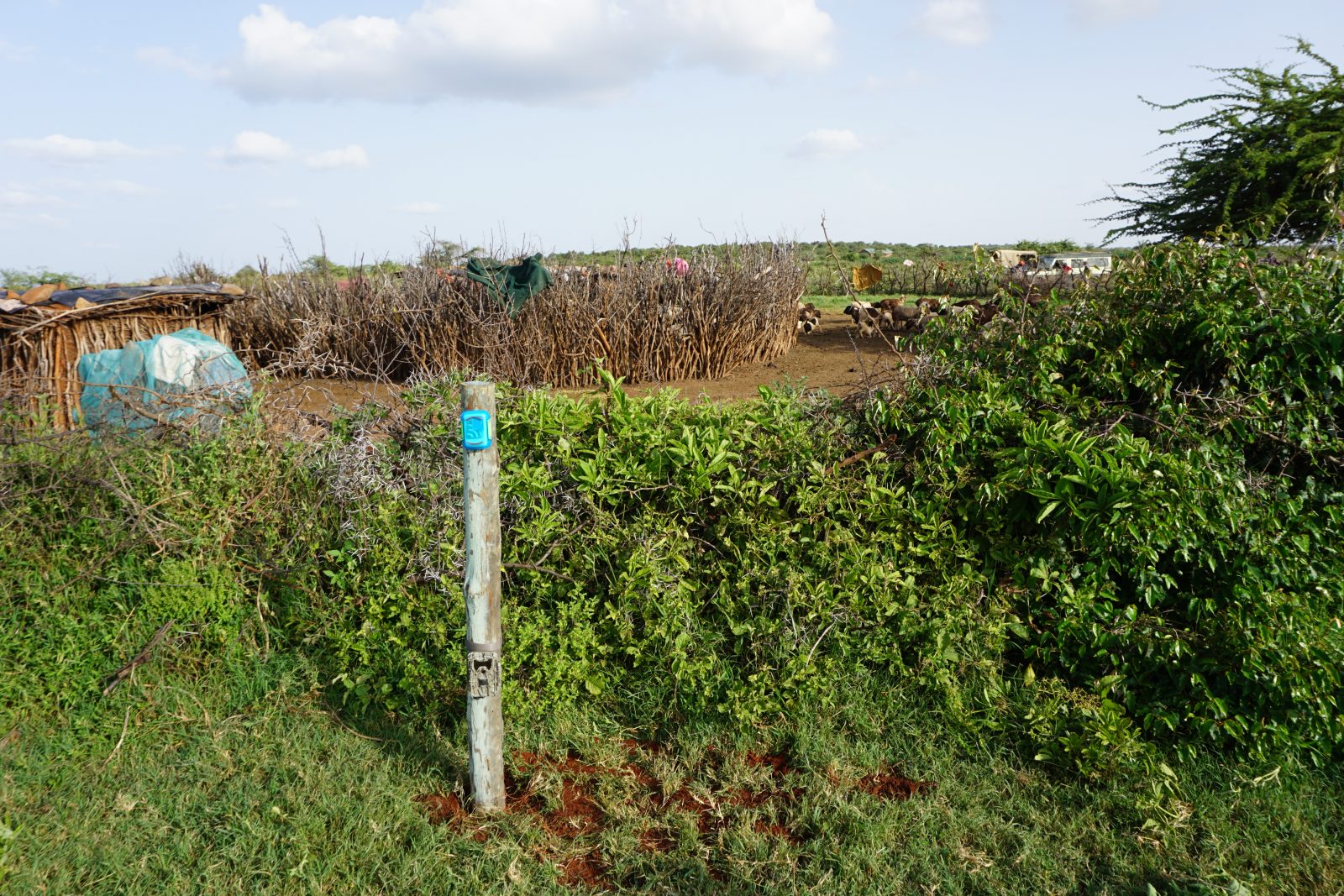
A boma wall equipped with a motion-activated camera and an AudioMoth acoustic recorder
The next step of the research program will be to put our new knowledge to the test—reinforcing the structures, deploying deterrents, and assessing the efficacy of potential solutions to human-carnivore conflict in the region. Through these efforts, we’re working to ensure that animals like lions and leopards can peacefully coexist with the people of this vibrant region for many years to come.
Claire Hoffmann, a Ph.D. student at Michigan State University, works with the San Diego Zoo Institute for Conservation Research Population Sustainability and Community Engagement teams in northern Kenya, on African leopard conservation.

